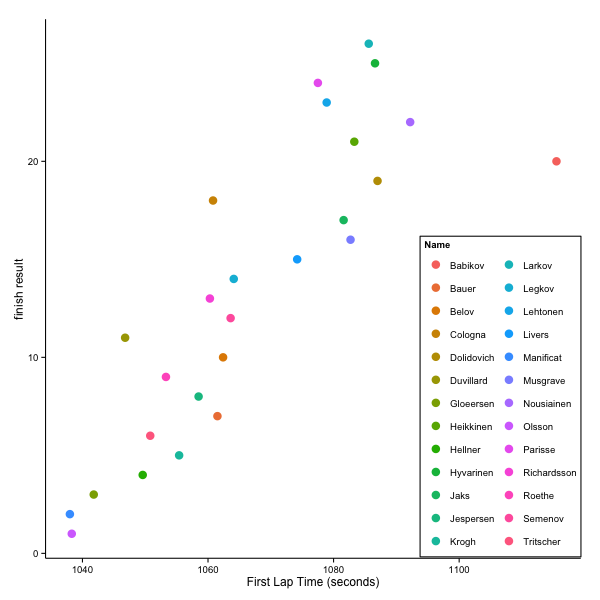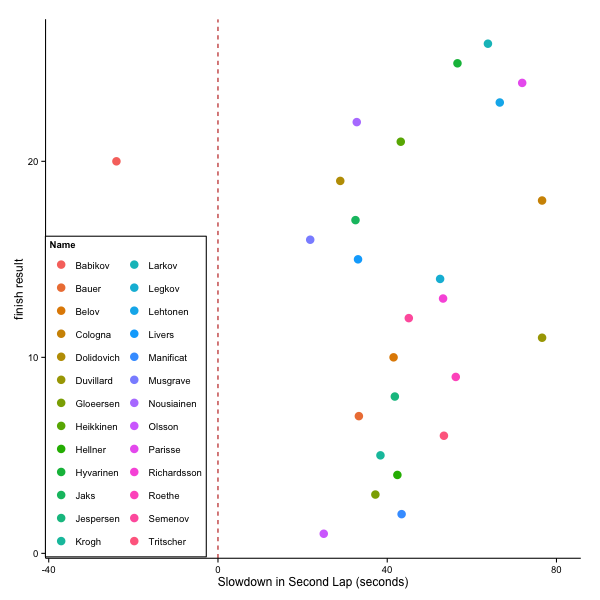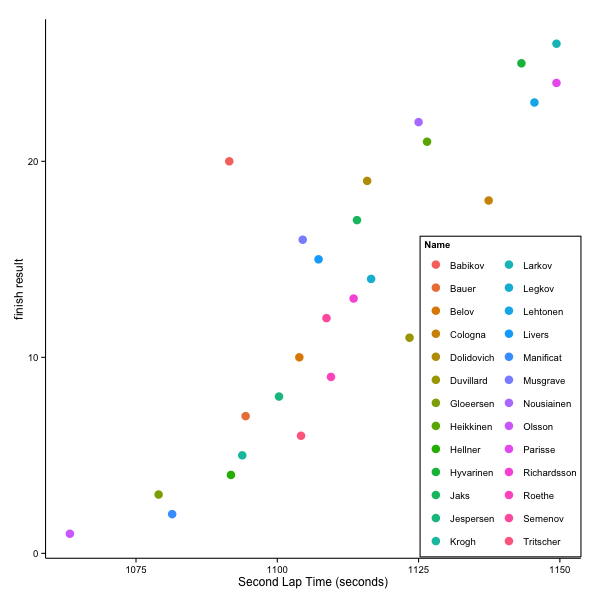A recent study published in the European Journal of Applied Physiology showed that in a 10 kilometer race, skiers slow down over the course of consecutive 2.5 kilometer laps and do not match the speed of the opening lap.
The study used eleven Norwegian cross-country skiers who were training 12 to 15 hours per week and had competed at the national level. They had plenty of experience racing and deciding how to pace themselves over the distance for the best end result. So what was going on? Were they starting too fast, to the detriment of their performance?
The answer, it seems, is not necessarily. While it’s a commonly-stated goal for athletes to have even or negative splits (i.e., the last lap faster than the first), research across different endurance disciplines shows that most commonly, especially in interval-start events, a quick start gives way to a steady, but slower, rest of the effort. And that doesn’t necessarily mean a slower overall time.
Research in speedskating shows that in distances from three up to 10 kilometers, competitors slow their lap times over the course of a World Cup race. This was true for both the slower athletes and the race winners.
And in running, a study found that competitors slow after a fast start in a 10 kilometer time trial – but that the speed drops much more abruptly over the course of the competition for lower-performance athletes than for top athletes. Both groups, however, kicked it in for the final 400 meters.
The key may be the individual-start nature of the races in the cross-country skiing paper. When racing against the clock, there’s not necessarily a benefit to having a strong finishing sprint, as long as a competitor is fast throughout the whole race.
The limited prior research into pacing in ski races has shown that this is true even in sprint qualifiers: in a study using nine elite Swedish skiers, the second lap of a two-lap sprint qualifier time trial was 3% slower than the first lap.
“… the overall time of the winner needs to be faster in absolute terms (racing against the clock) because the best athletes are not directly competing against each other,” wrote the authors of the speedskating study. “According to this, energy that is left at the finish is useless. As a consequences, ice speed skaters may self-select a pacing strategy that does not allow to hold some energy back.”
Indeed, the authors of the more recent skiing study found that while the pace declined over the course of the 10 kilometer time trial, effort did not. Skiers’ heart rates remained more or less constant, and then went up in the final 2.5 k lap of the race. That last lap was slightly faster than the middle two, but not to a statistically significant extent.
Furthermore, the one skier who adopted a different pacing strategy suffered for it. Despite the fact that the sixth- and tenth-ranked skiers had similar VO2Max values, they ended up in very different positions. The authors believe this was because the skier who ended up tenth tried increased his pace in the second lap of the race, only to run out of energy later. They called this a “non-appropriate pacing strategy.”
A Case Study
While the women’s 10 k freestyle at 2015 World Championships in Falun, Sweden, was influenced by weather, the men’s 15 k was not to the same extent. Looking at pacing over the two 7.5 kilometer laps of the race could test whether the pacing found in the recent study holds true in high-stakes racing. Johan Olsson of Sweden won the race (results here).
While the lengths of the two laps aren’t necessarily exactly the same – the start and finish lines were not evenly distributed on the lap – one can make the assumption that this slight difference affects all skiers the same way. So while a slower second lap might be due in part to the extra length of the finishing chute, differences in the amount slower the second lap is are still representative of skiers’ different pacing strategies or abilities.
First of all, a strong first lap was generally indicative of success in the World Championships 15 k.
 And furthermore, being fast on the first lap did not necessarily lead to a bigger slowdown on the second lap. Skiers throughout the top 26 finishers had varying differences between the speed of their first lap and their second lap, and it had little relation to what place they ended up. The one exception was Canada’s Ivan Babikov, who skied a much faster second lap. That pacing strategy did not prove ideal, as although he had one of the faster second-lap times he still finished 20th.
And furthermore, being fast on the first lap did not necessarily lead to a bigger slowdown on the second lap. Skiers throughout the top 26 finishers had varying differences between the speed of their first lap and their second lap, and it had little relation to what place they ended up. The one exception was Canada’s Ivan Babikov, who skied a much faster second lap. That pacing strategy did not prove ideal, as although he had one of the faster second-lap times he still finished 20th.
 Because this variation in how much skiers slowed down was distributed evenly throughout the field, the relationship between second-lap time and finishing result looked fairly similar to that of first-lap time and finishing result. The skiers were slightly reshuffled on the plot, but the same general pattern held.
Because this variation in how much skiers slowed down was distributed evenly throughout the field, the relationship between second-lap time and finishing result looked fairly similar to that of first-lap time and finishing result. The skiers were slightly reshuffled on the plot, but the same general pattern held.
Takeaway
Prior research has looked at how to adapt pacing to terrain in cross country skiing, for example, adopting a higher intensity on uphill sections with the assumption of recovery on downhill. This type of information feeds back into training strategies, as athletes can prepare themselves for shorter, harder efforts within a long race and train themselves to recover as much as possible in short intermediate sections.
But there has been very little research into pacing strategies over longer time periods and multiple laps in distance racing. Thus, the results of the new study carry some weight.
The author’s conclusions are upheld by a look at data from 2015 World Championships: starting at a fast pace and maintaining a more-or-less even effort – not necessarily an even time – seems to be a better strategy in an individual-start race than starting at a strikingly slower pace and saving energy to speed up in the final kilometers.
Chelsea Little
Chelsea Little is FasterSkier's Editor-At-Large. A former racer at Ford Sayre, Dartmouth College and the Craftsbury Green Racing Project, she is a PhD candidate in aquatic ecology in the @Altermatt_lab at Eawag, the Swiss Federal Institute of Aquatic Science and Technology in Zurich, Switzerland. You can follow her on twitter @ChelskiLittle.




